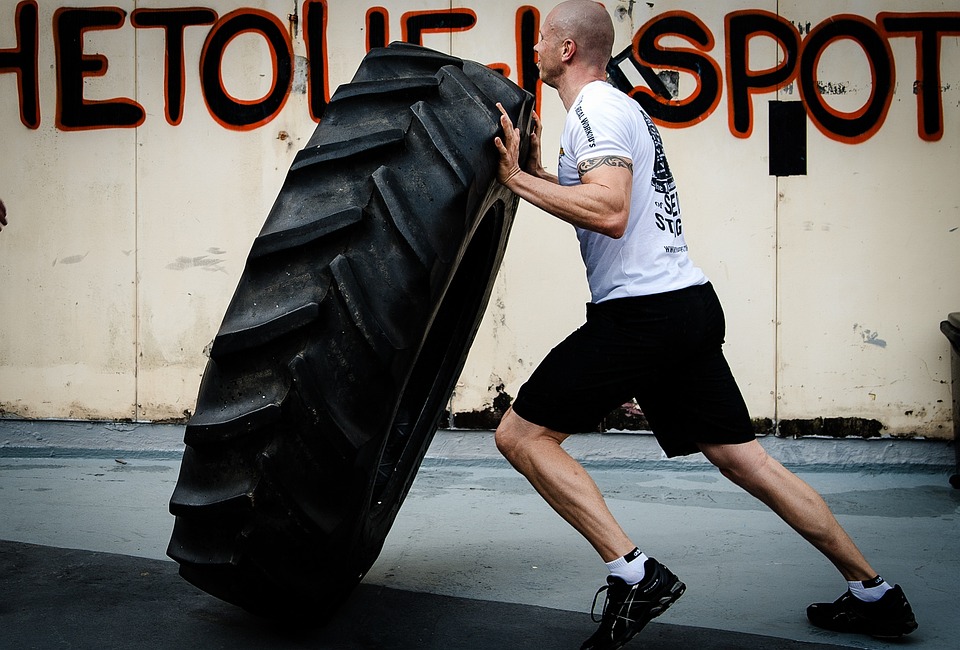The Pull-Up. For some people, its viewed as humble bodyweight movement that can be performed effortlessly after an all night alcohol bender right before you pass out. For others, it is viewed as an elusive movement reserved for the athletically inclined or gifted.
Whichever camp you’re in, this guide has something for you. The purpose is to cover everything you would need to get started learning pull-ups, refine you’re your current pull-up training, and advice on how to bring them to the next level. This includes common questions, movement technique, video, and detailed insights from someone who has been coaching this stuff for over 15 years.
First, lets get on the same page on what a pull-up is. The Pull-Up is an upper-body compound exercise that primarily works you back and biceps. But we already know that, right? What it is not is the Urban Dictionary term for “a threat. synonymous to ‘drop your location’ or ‘want to fight’!”
So when I say perform a pull-ups, please, please, don’t go get in a fight because some guy on the internet said you should. Got it?
Common Pull Up Questions: What is a Pull-Up?
The Pull-Up and its many variations are cornerstone movements to many strength programs. They are utilized by athletes in most sports and is a go-to movement for non-sport specific fitness and movement training. Its prevalence within disparate disciplines is well earned. It is a terrific movement that builds upper body strength and is infinitesimally customizable to the level and goals of the individual. Additionally, it utilizes simple and essentially free equipment.
Every gym and many parks have pull-up bars. Pull-Up bars and gymnastics rings are also not expensive and light weight and great for home use. The flexibility and minimal equipment needs of pull-ups make it all the more accessible as a movement that can easily be included in most exercise programs. It doesn’t matter if you pay $300/month for an all access Equinox membership in Manhattan or refuse or can’t pay for a gym membership and use a local park or something you’ve rigged up at home. Its available to anyone with the inclination to learn.
So, what is a pull-up?
A pull-up is a upper-body compound strength exercise. Compound simply means there are multiple primary muscle groups used to complete the movement. Opposed to an isolation movement where there is just one muscle group acting as the primary mover.
It is performed by hanging from an apparatus, using your body to pull ones self up, and then lowering back to a hang.
The pull-up has different meanings and purposes to different types of training modalities.
• General Purpose Fitness. The pull-up is often used to by athletes as tool to increase strength and power for their sport. With that said, it is hugely popular for people looking to improve their health, wellness, and fitness. It is (or should be) a movement practiced at-least weekly in a any fitness or strength program. Personally, I fall into this camp. I no longer compete in any sport but have pull-ups as part of my weekly routine.
• Powerlifting and Strength Development. For powerlifters, the pull-up and chin-up is an accessory movement to their sport specific training. It is used to help increase max weights for Squat, Deadlift, and Bench. It primarily does this by developing muscle mass and strength across the upper body. Mainly the upper-back. Generally weighted chins are preferred for this group
• CrossFit. In CrossFit, the pull-up is primarily an expression of power output across multiple time domains. In CrossFit, the pull-up is used as an expression of power, strength, stamina, and endurance. You’ll see weighted 1RMs. Weighted 5×5’s. And high rep sets using kipping or butterfly pull-ups. CrossFit is well knowing for using kipping pull-ups since one can perform more reps faster with less fatigue.
• Bodybuilding. Bodybuilders utilize the pull-up to to optimize for shape that will maximize for points in a bodybuilding show. This generally will mean using it to gain thickness in the lats and upper-back.
• Sport. Athletes of many sports will use the pull-up for general Fitness to help improve performance in their primary sport.
As you can see, the Pull-Up is truly a cross disciplinary movement. When a movement is utilized by across sports and exercise modalities it often means its a valuable tool used for exercise prescription.
The Level Up Method is a organizational framework to systematically progress people through bodyweight and gymnastics movements. It is the methodology that powers my CrossFit programs and progressions.
Within inversion their are foundational movements. Such handstands, handstand push ups, and one-arm handstands. With each foundational movement there five-levels to become proficient. Each of those five also have micro-levels. Each micro-level then has specific programming to help you progress.
